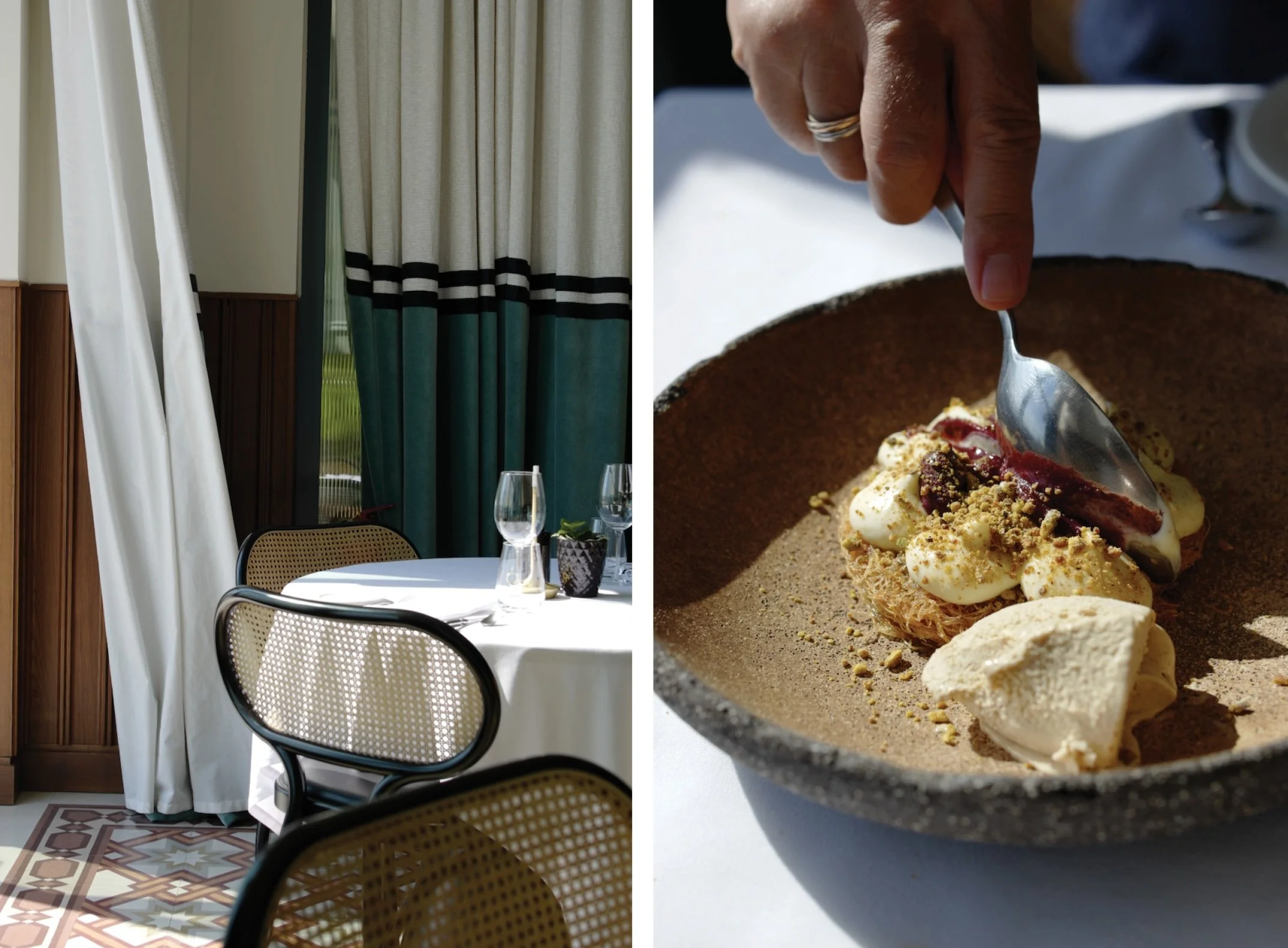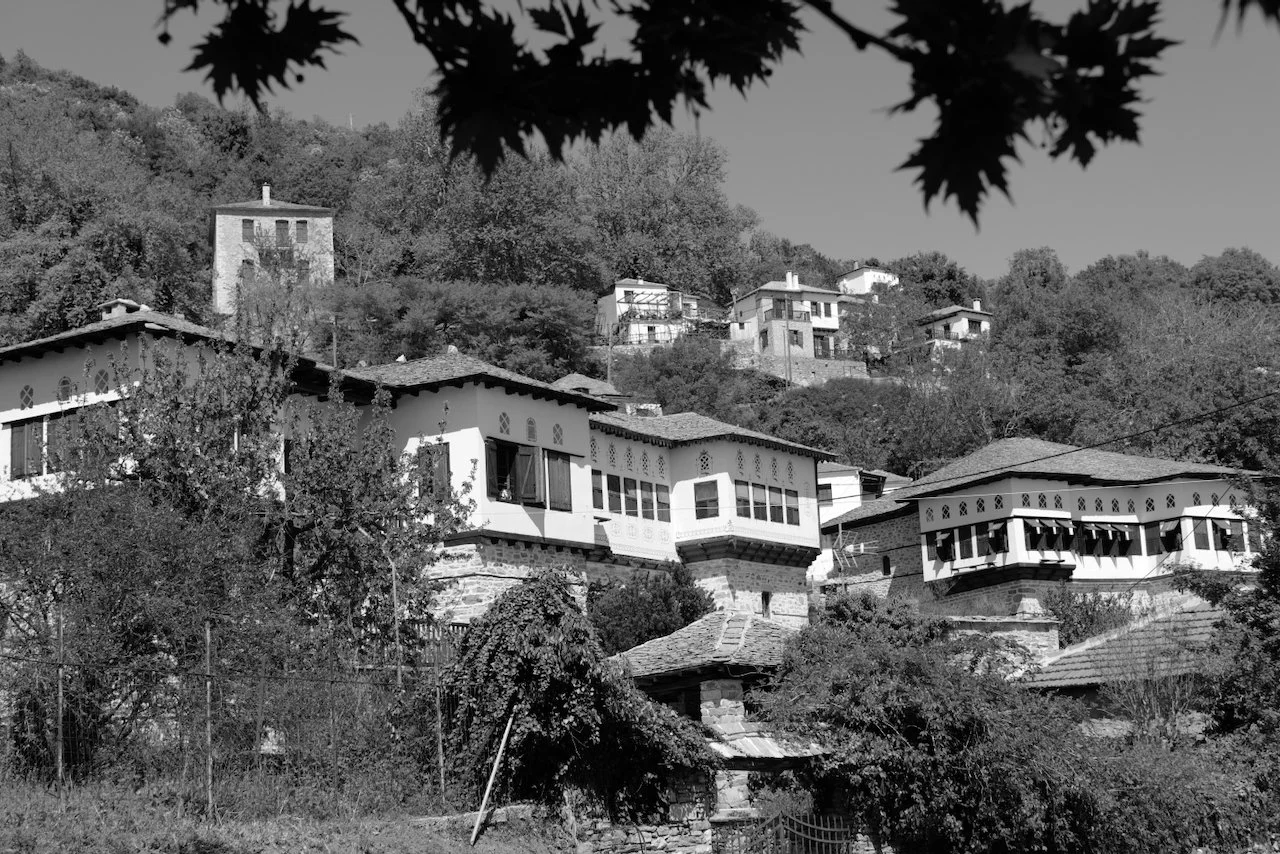Greece, 2025
OLYMPOS NAOUSSA IN THESSALONIKI
A Lunch That Broke the Callus
I don't easily express excitement.
My mother's subdued reaction to all things emotional—except irritation, that is—genetically dominates my father's readily abundant tactility. And age doesn't help either; decades of intense travel seem to have formed a callus thick enough to dull even the most passionate experiences.
Once, in a club in Ibiza—dragged there by the boys (the alternative being to wait in the car like a tired chauffeur)—some kids came over and asked if I was the manager. I suppose you get the point. And it’s not just about my sensational moves.
So I never expected a weekday lunch in Thessaloniki to deliver a punch that still has me feeling lyrical.
Vouliagmeni is the pearl of the Athens Riviera and is home to the modernist Four Seasons hotel and a spectacular new marina.
Cova at Vouliagmeni marina: a truly Italian aperitivo in Athens
I had my first exposure to gastronomy in the early ’80s. Even now, I can’t quite explain what prompted the meat trader at the Nice wholesale market to summon his wife—decked out in a red vinyl Courrèges ensemble—and invite me to lunch at Chantecler in the Negresco. Its chef, Jacques Maximin, had just earned his second Michelin star, making it the first two-star hotel restaurant in the world.
Elegant luxury abounds throughout Athens.
I’d driven to the south of France in a tiny, gold-colored, second-hand Fiat 127 Top to attend meetings with meat distributors in Lyon, Marseille, and Nice. My old Volkswagen Beetle had been stolen a few weeks earlier in Amsterdam. I still suspect the German squatters on the ground floor of the house R lived in at the time used it to haul a load of weed to Berlin and flip it for a profit. Amsterdam's hippie haze had given way to punk and a creeping dose of neoliberalism.
The Fiat was the only Italian car I've ever owned. The further south I drove, the better it handled. On the way back north, it broke down on the Périphérique in Paris. All my cars since have been German, Swedish, or English. Restrained temperament over immediate arousal, perhaps. They handled well in every cardinal direction and never stalled on the Périphérique.
Sanctuary of Asclepius and the Theatre of Epidaurus
Neither my car nor my French at the time could have impressed the meat trader—whose name I can’t remember. And my business acumen—if I ever had any—was still embryonic. We never did go into business.
.
If entering the Negresco under Rigaud's portrait of Louis XIV and the glares of Niki de Saint Phalle's voluptuous sculptures was nothing less than spectacular, Maximin’s nouvelle cuisine lunch didn’t leave a lasting impression on a 23-year-old who’d skipped breakfast in Marseille to make it to Nice in time.
I’ve always felt that good food requires generosity.
The monkfish fillets, cooked to perfection, rested on a bed of dried grasses from tidal meadows. Four baby carrots and two perfectly matched potatoes—so uniform they looked cloned—lined up beside a crescent of vibrant, basil-infused olive oil. So awe-inspiring a plate I felt like whispering, if it weren't for Mrs. Meat Trader, whose glamorous presence alone made up for the diminutive size of the meal.
Intimate Thessaloniki just prior to Easter
You don’t whisper at Olympos Naoussa, the iconic restaurant in Thessaloniki that recently reopened as part of the ON Residence. You grin, you wow, you share, you discuss, and you enjoy. Because good food is about conviviality.
Dimitris Tasioulas, Olympos Naoussa’s chef, brings creativity and modernism to traditional Greek recipes: authentic aromas, perfectly combined; local ingredients, many of them vegetables, beautifully plated. Greek food is generous. It’s meant to be shared over long conversations with friends and family. It’s meant to bring people together.
Olympos Naoussa, Thessaloniki
Perfect meals set me thinking…
And that’s exactly what we felt, sharing four courses over a bottle of Kir-Yianni Sauvignon Blanc. We were so moved, in fact, that we changed our travel plans to return for one more lunch before flying out—a risky thing to do when you’ve just had a near-perfect meal three days earlier.
We shared another round of four dishes—this time with a bottle of 'Ghi Kai ‘Uranos Terre et Ciel’ Xinomavro. Enough to fly home happily, amazed that some chefs have the knack to turn a simple beetroot into a taste explosion, grilled vegetables into plated sculpture, or a beef cheek served atop begendi—a smoky aubergine purée—into something as tender and fragrant as Turkish delight.
The Thessaloniki waterfront in spring is all about pastels.
Greece is evolving at breakneck speed after a deep economic crisis that left its mark on every level of society. Young creatives don’t overthink the future; they push forward, driving a cultural momentum that now outpaces many other European nations. You see this energy in stores, hotels, and restaurants where Greek traditions are reimagined and reinterpreted. It's present in Michelin-starred restaurants like Delta, Hervé, or Soil—on par with their French fine dining counterparts.
The rocks of Meteora and the backdrop of aluminum curtains for the ‘approaching Metlen’ exhibition of Tasos Vrettos at Momus, Thessaloniki
But it’s in places like Olympos Naoussa and Mavri Thalassa in Thessaloniki, or Linou Soumpasis, Annie, and Okio in Athens, where gastronomy truly meets Greek generosity and conviviality.
And they’re all worth a detour—whatever car you’re driving.
Just before leaving Athens for Thessaloniki, I’d spotted a gold-colored Fiat 127 Top parked outside the Prada store. It still had a bit of a vibe to it, with its three-spoke wooden steering wheel and velour seats. I suppose forty years ago it wouldn’t have looked out of place in front of the Negresco—less so than stalled in the right-hand lane of the Périphérique.
The old car got it right; if you're looking to move forward, go south.
Damourachi, Pelion
Subscribe to get full access to the newsletter and publication archives.

















